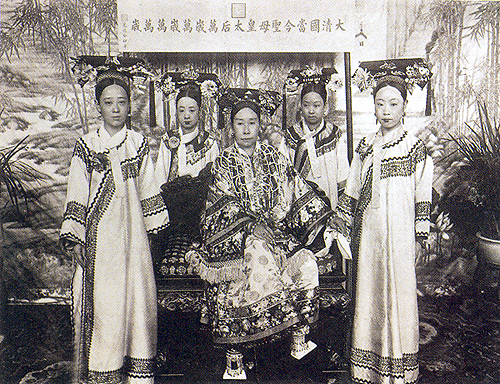
Last week, the whole world,
including me, closely watched the Trump–Kim summit in Hanoi and the leaders’ personal interactions. One particular scene stuck in my mind: Kim Jong-un’s sister, Kim Yo-jong,
trailing along behind her brother as he strolled with President Donald Trump before the real negotiations started. No doubt we’ll hear more about her and her role in the regime, but the image reminded me that the lasting shadow of male family members looms large over Asian women in politics.
A new generation of influential female figures is being groomed that may further continue the trend, including Anwar Ibrahim’s daughter, Nurul Izzah binti Anwar, who is vice president of the People’s Justice Party and a member of parliament; Sarah Duterte-Carpio, daughter of the president of the Philippines and incumbent mayor of Davao; and Puan Maharani, a granddaughter of Sukarno (Indonesia’s first president) and an active member of President Joko Widodo’s administration.
Nevertheless, the vast majority of highly capable women in current and former top positions in Asia are or were the daughters, wives or sisters of powerful male politicians. The list is long, from Madame Chang Kai-shek and Madame Mao, who played key roles during after their husbands’ reigns, to an assemblage of elected leaders:
- Three-time Sri Lankan prime minister (and the first woman in the world to be elected as a head of state in 1960) Sirimavo Bandaranaike was the widow of PM Solomon Bandaranaike, who was murdered in 1959.
- Indira Gandhi, who served twice as India’s PM, was a daughter of Jawaharlal Nehru, the country’s first PM.
- In the Philippines, former presidents Corazon Aquino (in office from 1986 to 1992) and Gloria Macapagal Arroyo (in office from 2001 to 2010) followed in the footsteps of their husband and father, respectively.
- Khaleda Zia, Bangladeshi prime minister (1991 to 1996 and 2001 to 2006), is the widow of president Ziaur Rahman.
- Indonesia’s first female president, Megawati Sukarnoputri (in office from 2001 to 2004), is a daughter of Sukarno.
- In South Korea, former president Park Geun-hye (in office from 2013 to 2017), who’s currently serving a sentence for abuse of power and corruption, is the daughter of president Park Chung-hee, who was assassinated in 1979.
- Yinluck Shinawatra, prime minister of Thailand from 2011 to 2014, is a sister of former PM Thaksin Shinawatra.
- In Myanmar, Aung San Suu Kyi—at one stage idealised in the Western liberal democracies but now ostracised and disgraced because of her handling of the Rohingya crisis—is the daughter of the country’s independence hero, Aung San.
- After the elections in Malaysia in May last year, Wan Azizah Wan Ismail, wife of Anwar Ibrahim, took a short temporary post as deputy prime minister (for the first time in a Muslim-majority country).
Two exceptions are Singapore’s President Halima Yacob, who was appointed to the largely symbolic role in 2017; and Dang Thi Ngoc Trinh, who served briefly as acting president of Vietnam after the sudden death of president Tran Dai Quang late last year. But the one real shining exception is Tsai Yingwen, the president of Taiwan, who was previously a law professor and currently, in my opinion, holds one of the most challenging positions in the world.
Clearly, not enough has changed since the reign of powerful Chinese Empress Wu Zetian, who ran the Zhou dynasty from 690 to 705 BCE. She, too, got there through a family connection.
That politics everywhere remains inconducive to women’s participation is a given (just listen to former PM Julia Gillard’s speech about
misogyny in the Australian parliament). In a number of Western liberal democracies, we are yet to see a female head of state, including in the US (Hillary Clinton, who came closest to getting elected to the position, was also once a first lady). But in most of Asia, additional factors come into play. The residues of autocratic rule make politics an exclusive domain, often occupied by dynasties, in which women come to power through inheritance from their male family members. So prevalent is this pattern that a dark-humour anecdote in Asia has it that if a woman wants to stand a chance in elections, she should consider having her male family member
assassinated.
Family connections act as incubators for female Asian political aspirants and as umbrellas sheltering them in an otherwise unwelcoming and exclusive men’s club. Following in the footsteps of their male relations gives them legitimacy and the confidence of their citizens. There’s been insufficient recognition of this limitation, and efforts to change what’s clearly a sociocultural problem have been inadequate. Women’s underrepresentation in the upper echelons is not about their capacity or desire to participate in politics; it’s primarily a product of cultural expectations and limited support from families and society for women, who are then forced to choose between the family and the state.
A continuing challenge in Asia, and elsewhere, is to foster political ambitions in future generations of female leaders, beyond those who already have role models among their male family members, and to widen the avenues for female political participation.
As the region prepares for a number of major elections, the chances that more female non-dynastic leaders will emerge from them are slim. In Thailand, Princess Ubolratana Mahidol, sister of King Maha Vajiralongkorn, planned to run in the March elections, but it was only a couple of days before the king denounced the bid as illegal. In India, Priyanka Gandhi Vadra from the Gandhi–Nehru family (the daughter and granddaughter of former PMs) is running in the May general elections. We’re yet to see self-made female leaders making it to the top.
And while populism is on the rise in Asia, as elsewhere, and there are increasing numbers of perceived ‘grassroots’ leaders with little or no family support (Joko Widodo in Indonesia and Narendra Modi in India are examples), populist figures in Asia still seem to have male faces.
 Print This Post
Print This Post